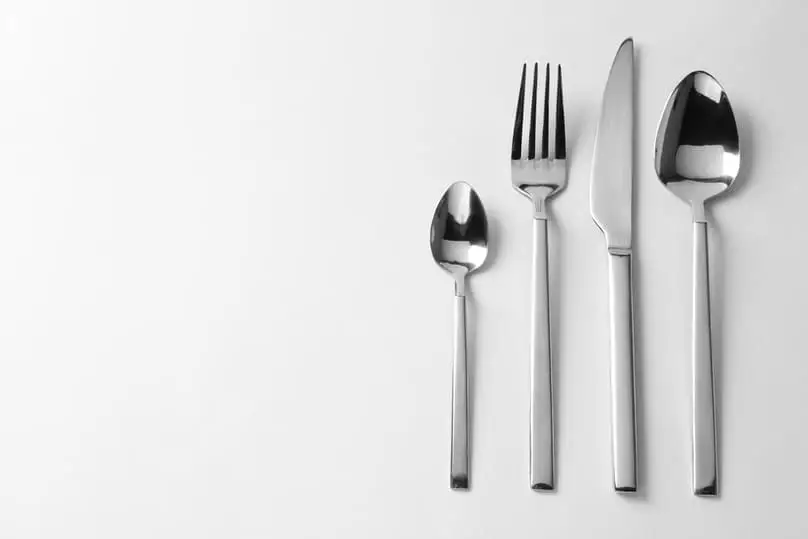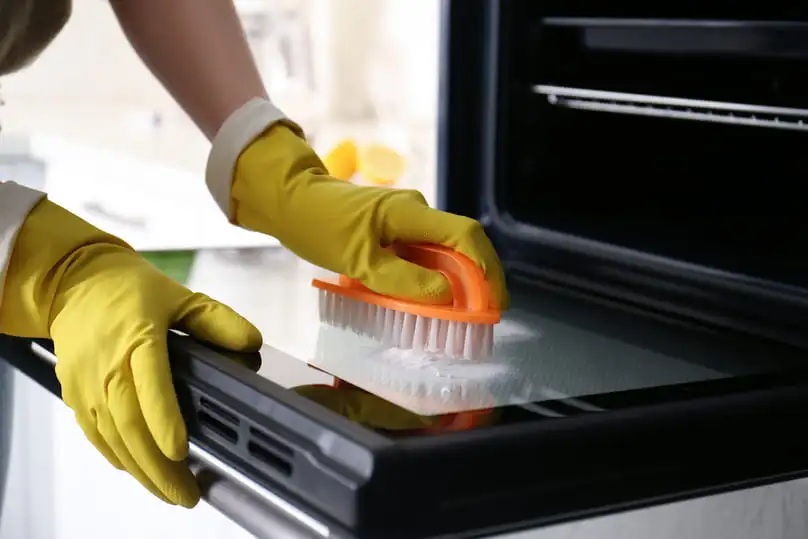Are the first rays of sunshine arriving? Is the weather getting warmer? The patio umbrella is an essential piece of outdoor furniture for dinner parties, gatherings with friends in the garden, or long work sessions on the patio.
A garden umbrella is key to enjoying summer days outdoors, but over time, it gets dirty, and mold can grow on the fabric if not properly maintained. That’s why knowing how to clean patio umbrella is essential to keeping your outdoor space looking fresh and safe.
Whether you’re dealing with seasonal buildup or wondering how to clean patio umbrella mold, regular maintenance makes a big difference. In this guide, Yorleny’s Cleaning Services walks you through how to clean an outdoor umbrella step by step, covering everything from fabric types to mold removal and drying techniques.
Know Your Umbrella: Types of Outdoor Fabrics and Their Cleaning Needs
When learning how to clean patio umbrella, start by identifying its fabric type. Outdoor umbrellas are made with different textiles, each with unique cleaning requirements.
Common materials include acrylic (such as Sunbrella), polyester, and olefin. Acrylic textiles are extremely durable, fade-resistant, and mildew-resistant, requiring just light soap and water to clean. In tougher cases, bleach can be used sparingly.
Polyester is a more affordable option, but it may fade more quickly and often needs deeper cleaning. Olefin fabrics are known for their UV resistance and decent durability at a lower cost. No matter the fabric, consistent care—including stain removal and cleaning the patio umbrella canopy—is key to extending its life and preventing mold buildup.
Sunbrella vs. Polyester: What’s the Difference?
Sunbrella and polyester are both synthetic fabrics used in outdoor furniture, but they differ significantly in performance. If you’re asking “how do I clean my outdoor umbrella?”, knowing your fabric helps determine the safest cleaning method.
Here’s a detailed comparison:
Sunbrella:
- Material: Made from solution dyed acrylic fibers.
- Durability: Highly durable and resistant to fading, mildew, and stains.
- UV Resistance: Excellent UV resistance, allowing it to withstand prolonged sun exposure without significant fading.
- Water Resistance: Water repellent and quick drying.
- Longevity: Can last 10 years or more with proper care.
- Cost: More expensive than polyester.
Polyester:
- Material: A synthetic fiber known for its strength and durability.
- Durability: While durable, it is not as resistant to fading from UV exposure as Sunbrella.
- UV Resistance: Regular polyester has limited UV resistance.
- Water Resistance: Generally water resistant but may be less effective than Sunbrella.
- Longevity: Can last 5 to 7 years but may fade or degrade faster with extended sun exposure.
- Cost: More affordable than Sunbrella.
Why Material Matters When Cleaning
Understanding fabric types is crucial when figuring out how to clean patio umbrella. Some materials can handle stronger cleaning agents, while others require gentle soap and cool water.
For example, cleaning patio umbrella canopy made from polyester is generally simple due to its mildew resistance. However, for umbrellas with acrylic fabrics like Sunbrella, even though they resist mold well, it’s still important to rinse thoroughly and dry completely to prevent buildup.
How to Clean Patio Umbrella (Manual Method)
Umbrellas and parasols are essential elements in outdoor spaces, such as terraces, gardens, patios, or pool areas. They not only provide an aesthetic touch but also serve a practical function: protecting us from the sun, rain, and other weather elements.
However, because they are constantly exposed to outdoor conditions, they require special care to maintain their functionality and appearance. This guide will show you how to clean patio umbrella components step by step, from the base to the canopy.
Supplies You’ll Need
What do we need to clean a patio umbrella or parasol? Keep at hand the following tools and products:
- A basin with warm water
- Neutral soap or dish soap
- A soft-bristled brush
- Cloth or sponge
- White vinegar (optional)
- Baking soda (optional)
- Pressure washer (optional)
Step-by-Step Instructions
How to Clean the Umbrella Base
With prolonged use, the plastic umbrella base takes on a very unsightly dark tone. To properly follow how to clean patio umbrella best practices, scrub the base thoroughly with a brush and soapy water. If there are yellow or whitish stains, consider using products like white vinegar or baking soda, as they are more powerful and effective. After removing the stains, be sure to rinse the area with clean water to eliminate any detergent residue.
If the umbrella base is made of stone, be careful not to use abrasive detergents, as this could damage the natural color. In this case, mild soapy water will suffice.
How to Clean the Umbrella Pole
Whether you’re cleaning plastic, wood, or aluminum poles, using the right method is part of knowing how to clean patio umbrella correctly.
- Plastic: Use water, soap, and vinegar.
- Wood: Clean with a brush and pH-neutral soap.
- Aluminum: Wipe down with a sponge and mild soapy water. For tough stains, diluted ammonia (1 part ammonia to 10 parts water) can be used.
How to Wash Your Umbrella Canopy
Washing the umbrella fabric is, without a doubt, the most important part of any how to clean patio umbrella guide.
- Plastic canopies: Simply clean with soap and water.
- Removable polyester fabric: Machine-washable on a delicate cycle using mild detergent. Close zippers and roll the canopy for better results. For mold stains, pretreat the fabric with white vinegar or diluted bleach before washing.
- Hand wash method: Use a large basin filled with water, liquid soap, and white vinegar. Scrub stained areas with a brush, focusing on seams and corners, then rinse thoroughly with cold water.
To ensure lasting results, make sure the fabric is completely dry before reassembling or folding.
Drying and Reassembling Tips
Drying is just as important as washing when learning how to clean patio umbrella the right way. Improper drying can lead to mildew or fabric damage.
Drying:
Air Dry: The best way to dry your umbrella is to allow it to air dry completely.
Sunlight: If possible, position the canopy in the sun to speed up the drying process.
Open Frame: If the umbrella is still on the frame, leave it open to dry.
Avoid the Dryer: Never put the umbrella canopy in a dryer, as this can damage the fabric.
Reassembly:
Remove and Store Parts: If you disassembled the umbrella for cleaning or repair, keep all the parts organized and together during the drying process.
Check for Damage: Inspect the canopy, frame, and mechanism for any damage before reassembling.
Reattach Fabric: If you removed the fabric, carefully reattach it to the frame, ensuring that it is properly tensioned.
Lubricate: If the crank or tilt mechanism feels stiff, use a dry silicone lubricant (not WD-40) to improve its functionality.
Secure Parts: Ensure all screws, bolts, and other fasteners are securely tightened.
Test Operation: Once reassembled, test the umbrella to ensure that it opens, closes, and tilts smoothly.
How to Remove Mold and Mildew from Patio Umbrellas
Understanding how to clean patio umbrella surfaces properly is crucial for mold prevention, especially since outdoor umbrellas and parasols are prone to moisture exposure. To prevent mold, always ensure the umbrella is completely dry before closing it. If mold has already formed, use a solution of water and white vinegar or baking soda to clean the affected areas.
Natural Cleaning Solutions (Vinegar, Baking Soda)
Vinegar is a natural mold remover and is safe to use on most outdoor fabrics. As part of learning how to clean patio umbrella fabrics the eco-friendly way, prepare a solution of 1 liter of warm water and baking soda crystals or white vinegar, then brush the stained areas.
Stubborn stains may require more targeted treatments. For rust, apply a mixture of lemon juice and salt, let it sit, and then rinse thoroughly. For oil stains, absorb the excess with talcum powder before washing the area. These are effective and environmentally friendly solutions.
Best Mold Cleaners for Outdoor Use
There are several commercial solutions that can help you remove mold from your patio umbrella. Among the leading brands is CLR Mold & Mildew Stain Clear Stain Remover, a bleach-free stain remover that is part of the EPA’s Safer Choice Program, recognizing the product as a safer alternative to traditional chemicals.
Another widely used product is Clorox Tilex Mold and Mildew Remover Spray. As its name suggests, it’s bleach-based, so be careful and test before using it on fabrics or surfaces.
How to Prevent Mold from Coming Back
Keep your patio umbrella dry, clean it on a regular basis, and store it appropriately to avoid mold growth. Make sure the umbrella is thoroughly dry before shutting and storing it. Use a mildew-resistant cloth, and consider a ventilated cover for storage.
Cleaning Frequency: How Often Should You Clean Patio Umbrellas in Florida?
In Florida, it’s important to know how to clean patio umbrella surfaces at least once a month, and more frequently if they are near trees or receive heavy use. Regular cleaning helps prevent mold, mildew, and dirt buildup, which are common problems due to the state’s humid climate.
Tips for Humid and Rainy Climates
For a monthly cleaning of your patio umbrella, use a mild soap and water solution, followed by a thorough rinse to remove accumulated dirt and debris. If your umbrella is positioned under trees or in a high-traffic area, inspect it weekly and clean it as needed to prevent stains and mold growth..
Common Mistakes to Avoid When Cleaning Patio Umbrellas
When learning how to clean patio umbrella fabrics and structures properly, it’s important to avoid common mistakes. Using harsh cleaning agents can damage the fabric, and closing the umbrella while it’s wet can promote mold growth. Failing to thoroughly rinse off cleaning products may leave residue that degrades the material over time. Also, avoid using pressure washers, which can harm both the frame and the canopy.
Bleach Damage
Avoid abrasive cleaners or harsh chemicals like bleach, as these can damage the umbrella fabric and compromise its water and UV resistance. As part of proper care when learning how to clean patio umbrella surfaces, opt for mild soap and warm water or products specifically designed for outdoor use.
Forgetting Regular Cleaning
One of the key rules in how to clean patio umbrella canopies effectively is consistency. Regular maintenance helps prevent the buildup of dust and hard-to-remove stains.
Leaving the Umbrella Wet When Storing
Never store a closed umbrella while it’s still wet. Moisture trapped inside can lead to mold, mildew, and unsightly stains. A critical step in how to clean patio umbrella fabric is ensuring it is completely dry before storing it.
When to Consider Professional Patio Umbrella Cleaning
Why DIY Isn’t Always Enough for Florida Homes
While learning how to clean patio umbrella fabric is a valuable skill, Florida’s unique climate—with its high humidity, frequent rain, and intense sun—can make DIY cleaning a challenge. Mold, mildew, and sun damage are common issues that aren’t always resolved with basic soap and water. In many cases, even diligent home cleanings can’t fully restore your umbrella’s appearance or hygiene.
If your outdoor umbrella has stubborn mold stains, deep-seated dirt, or delicate materials, it might be time to bring in the pros.
Benefits of Hiring Yorleny’s Cleaning Services for Outdoor Fabric Care
At Yorleny’s Cleaning Services, we go beyond the basics of how to clean patio umbrella surfaces. Our trained team uses fabric-safe, eco-friendly products and proven techniques to restore your umbrella’s beauty without damaging the material. Whether it’s part of a seasonal cleaning routine or a one-time deep clean, we handle every detail—so you don’t have to.
Plus, we can assess and clean other outdoor furnishings and areas to ensure your whole patio or garden is looking its best.
Keep Your Outdoor Spaces Clean, Fresh, and Mold-Free All Year Round
Don’t let mold, mildew, or stains ruin your outdoor relaxation time. Whether you’re prepping for summer, cleaning up after a storm, or simply maintaining a beautiful patio, knowing how to clean an outdoor umbrella fabric is the first step—but professional help can take it further.
📞 Ready for a spotless outdoor space? Contact Yorleny’s Cleaning Services today to schedule a consultation or learn more about our outdoor cleaning services. Your patio umbrella (and your guests) will thank you!
Frequently Asked Questions About How to Clean Patio Umbrella
Can I machine wash my patio umbrella cover?
Yes, certain patio umbrella covers can be machine washed, but this is dependent on the fabric and if the canopy is detachable. Always refer to the manufacturer’s care instructions first. If the canopy is removable and made of a suitable material, such as Sunbrella, it may often be washed on a gentle cycle with cold water and light detergent.
Avoid bleach and strong chemicals, and allow the fabric to air dry entirely. If machine washing is not suggested or the canopy cannot be removed, hand washing is a safer option.
What’s the best way to remove mold from a patio umbrella?
To remove mold from a patio umbrella, first brush off loose spores. Sunbrella recommends a cleaning solution of 1 cup bleach and ¼ cup mild detergent per gallon of water. Saturate the afflicted areas with the solution, wait for 15 minutes, and then scrub with a gentle brush. Rinse carefully and let the umbrella air dry entirely.
How often should I clean my outdoor umbrella in humid climates like Florida?
To prevent mold and mildew growth in Florida’s humid climate, outdoor umbrellas should be cleaned at least once a month, if not twice a week during the rainy season. Regular hose rinsing and deep cleaning with soap and water can assist to keep the umbrella looking good and prevent dirt from becoming trapped in the fabric.
Recent Articles

How to Clean Silver: Expert Tips for Shiny Jewelry and Silverware in Florida
Learning how to clean silver correctly is essential for keeping your jewelry, silverware, and decorative pieces bright and free of tarnish. Silver…

Thanksgiving Kitchen Organization Tips: Prepare Your Florida Home for a Stress-Free Holiday
Thanksgiving is approaching once more, bringing a delicious feast and the delight of uniting with family and friends. To help you get…

How to Clean Oven Glass: Easy Tips for Sparkling Oven Doors in Florida
Few things are as frustrating as researching how to clean oven glass only to look at a gleaming oven and discover that…
An overview of the areas we serve
See below to check if our top-quality house cleaning services are available in your city and book your first appointment with just a few clicks.
